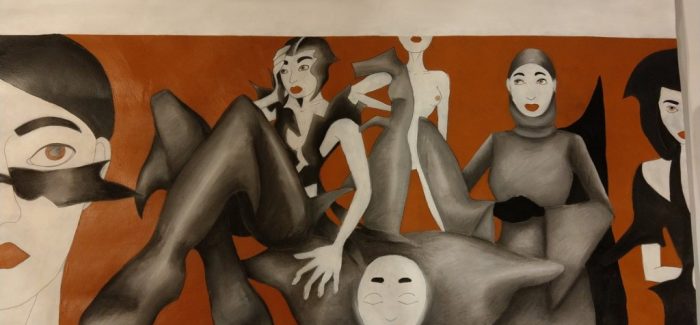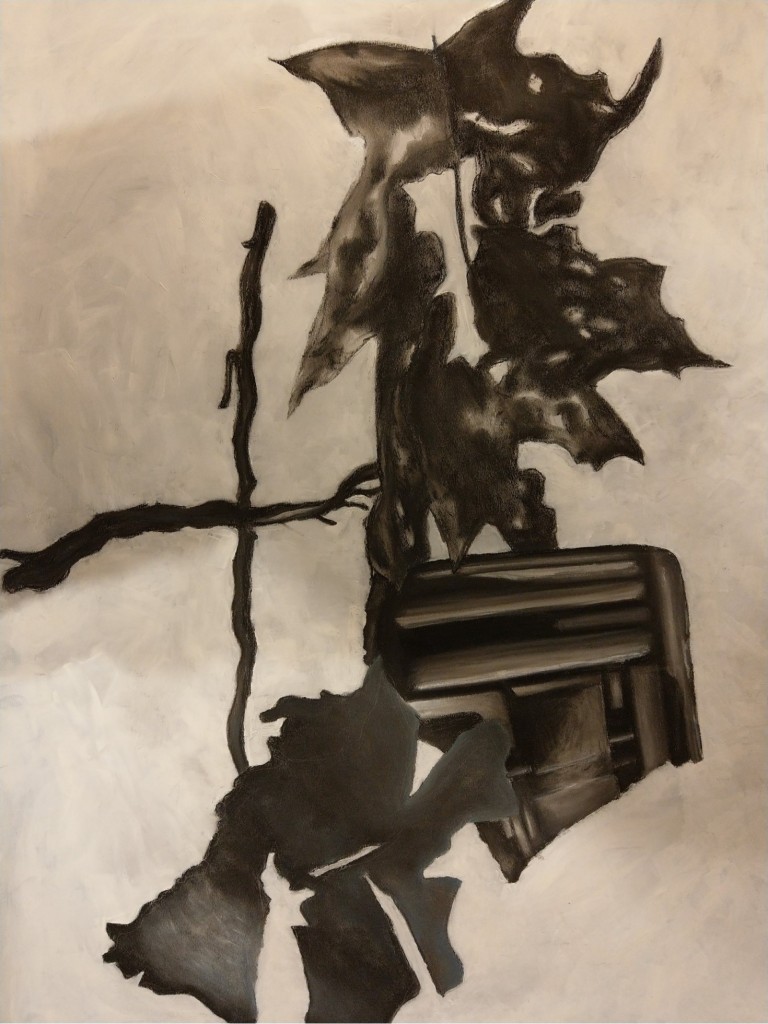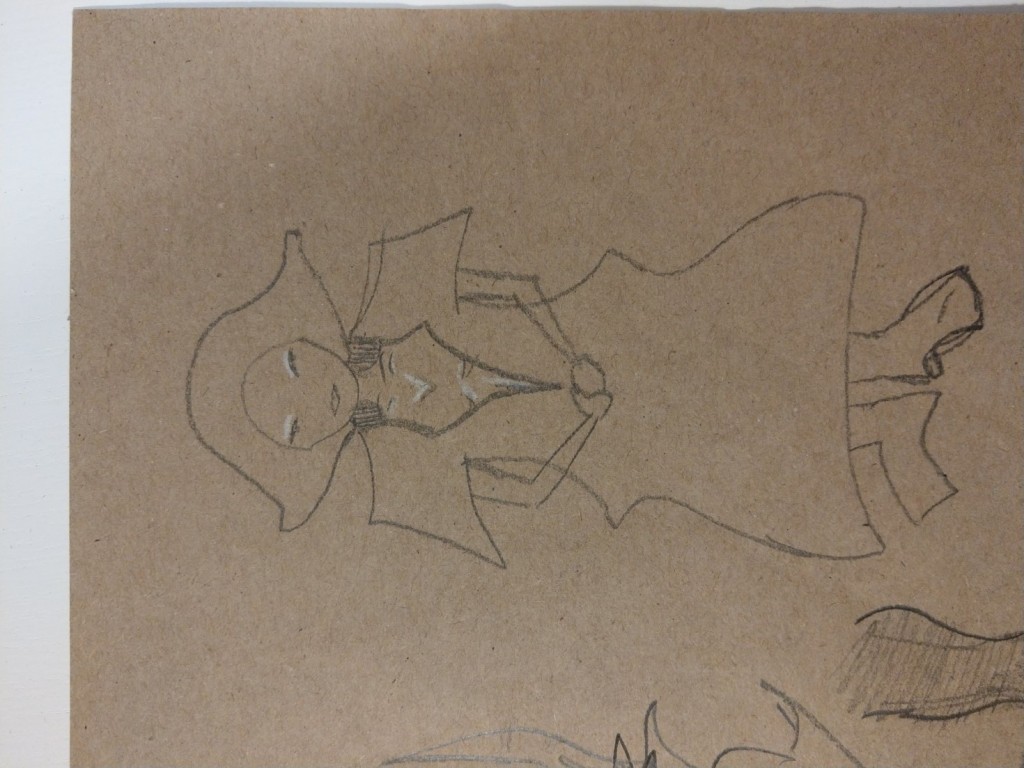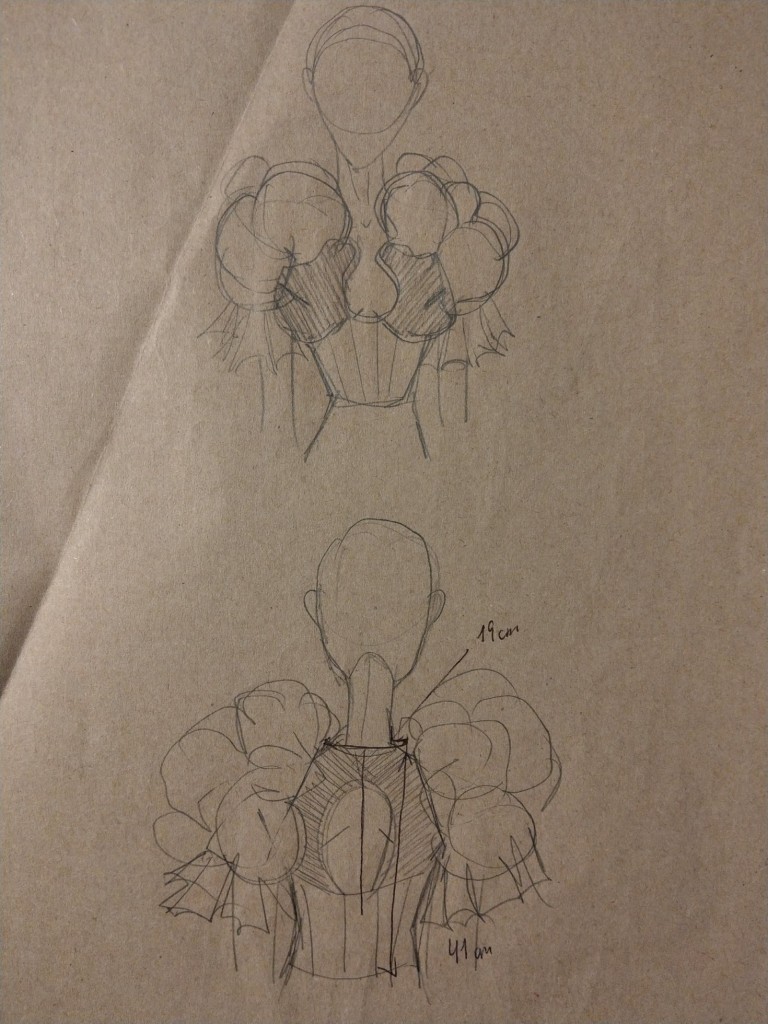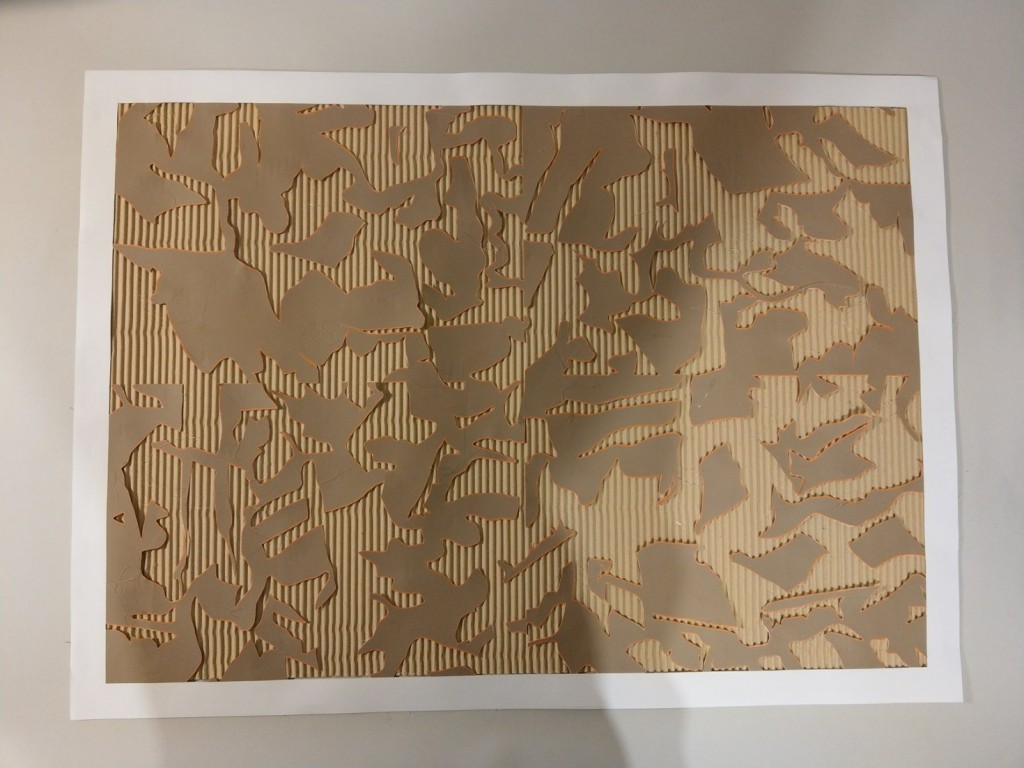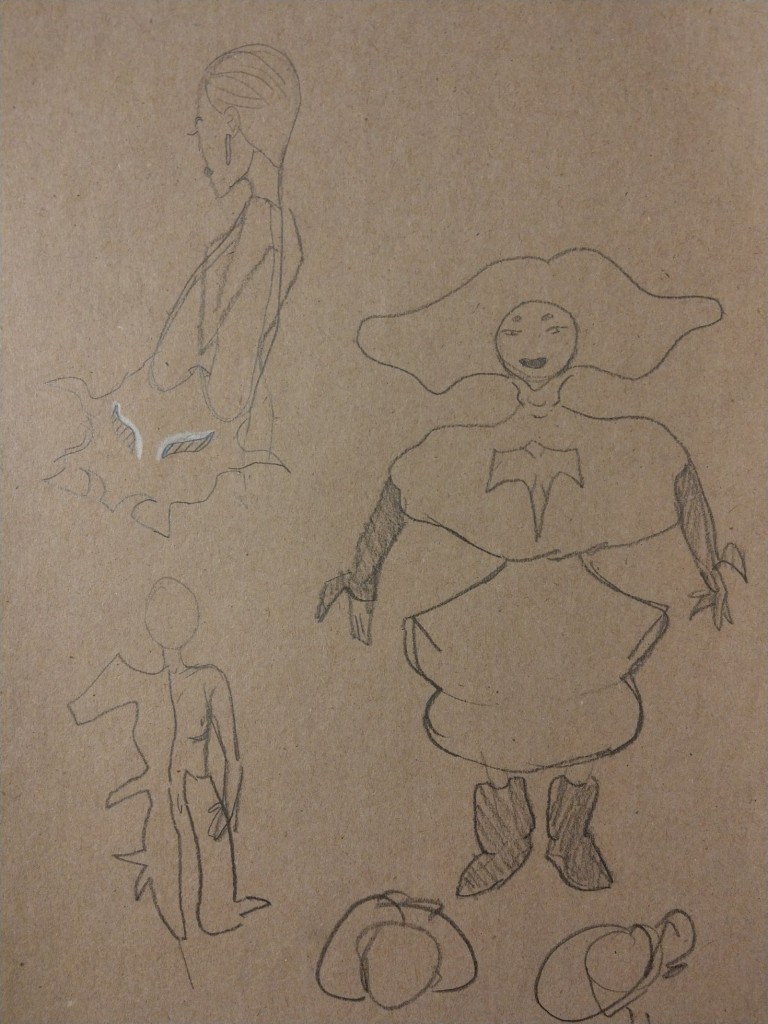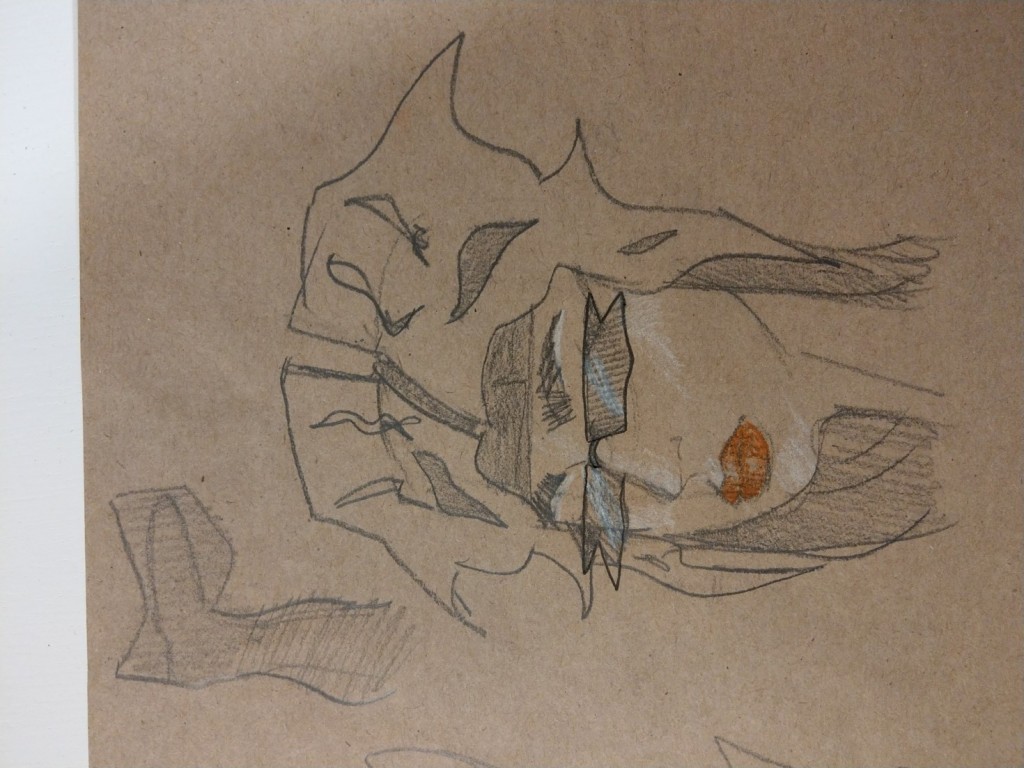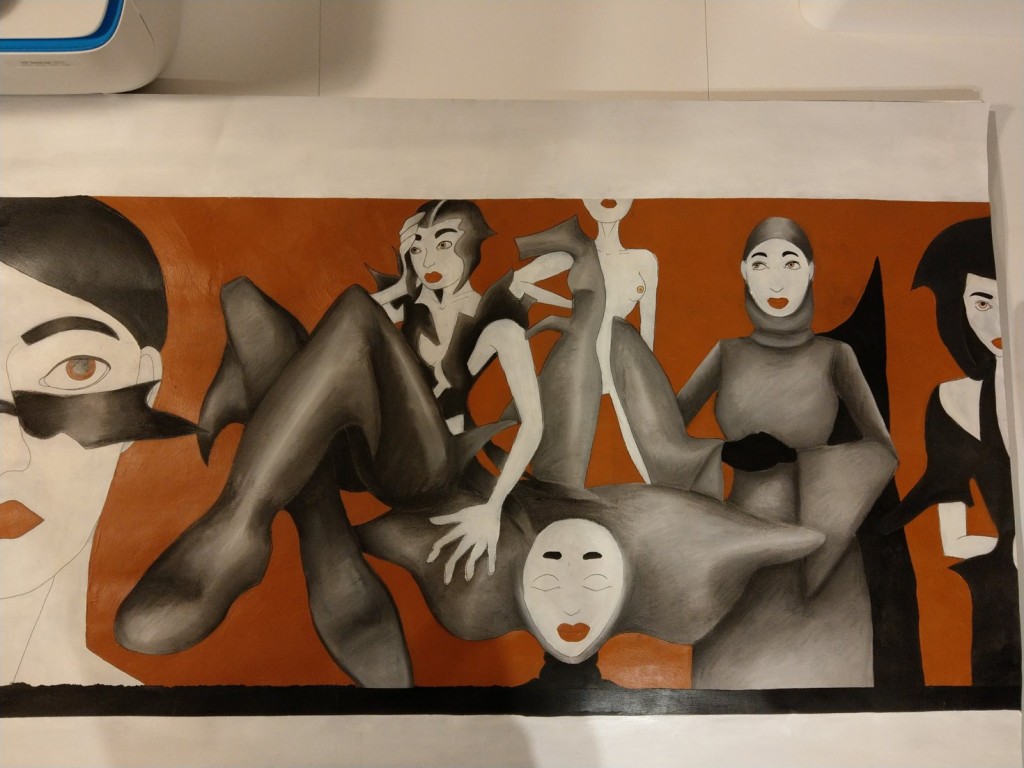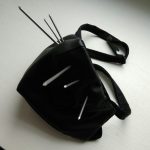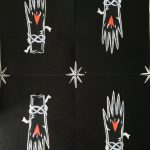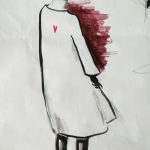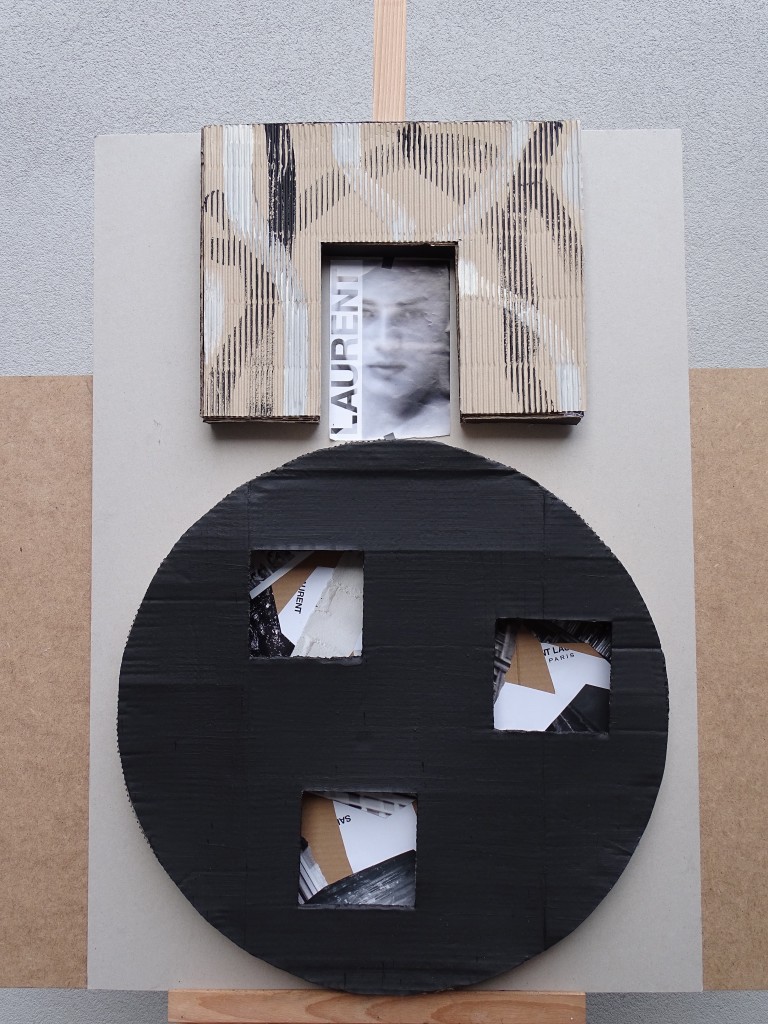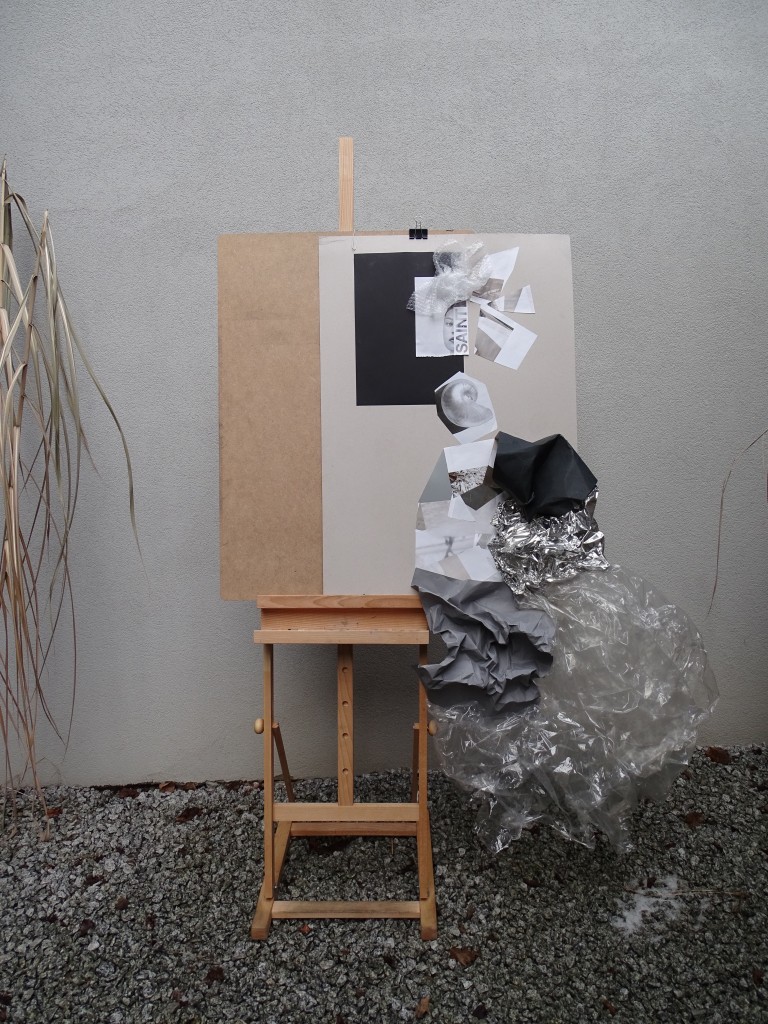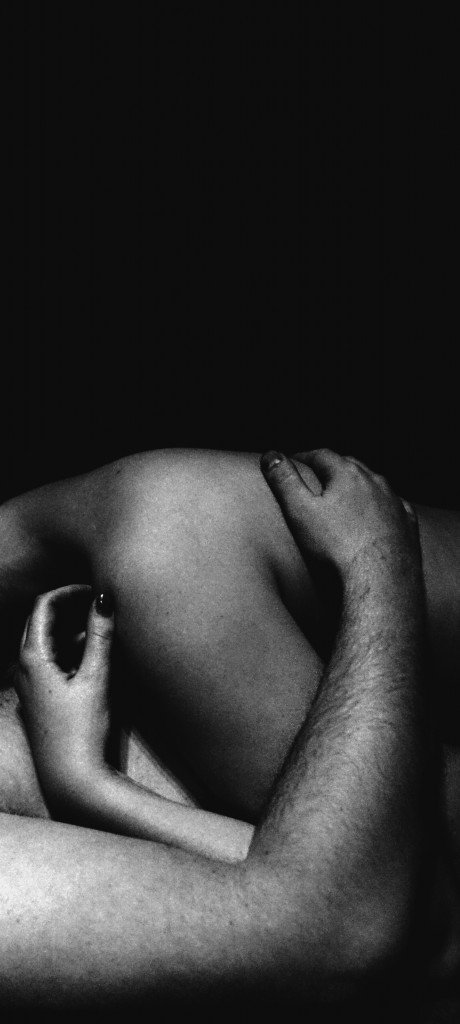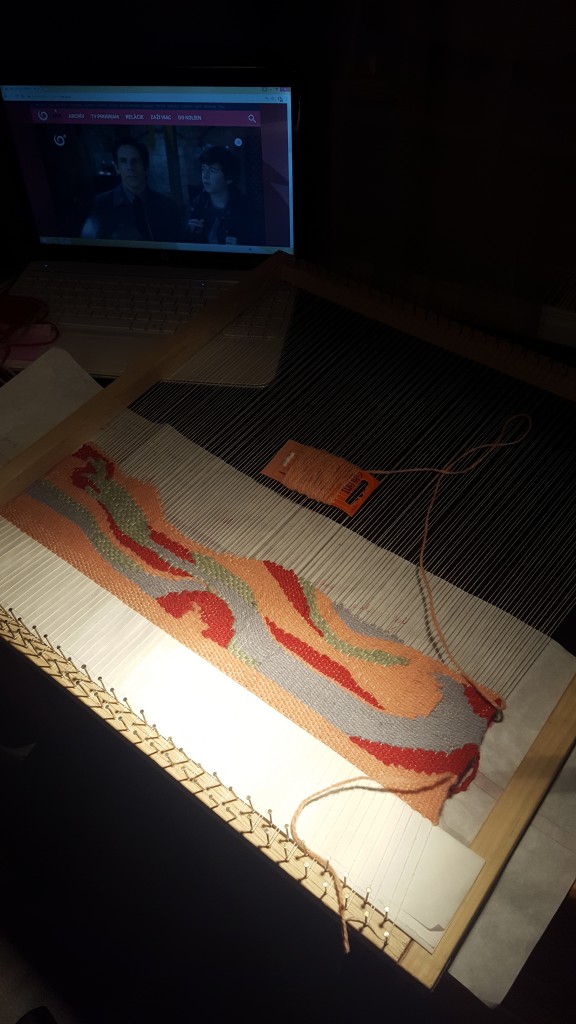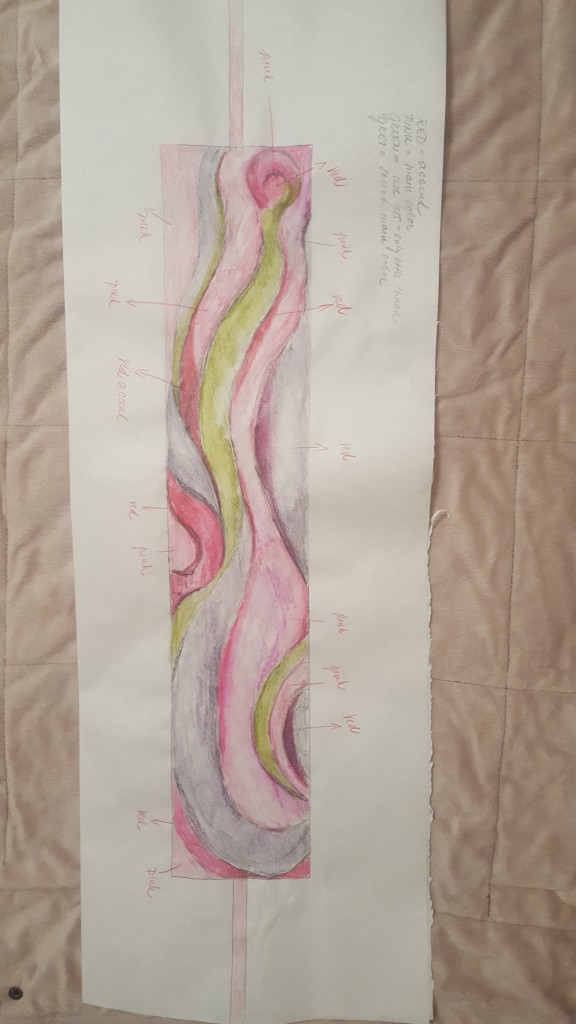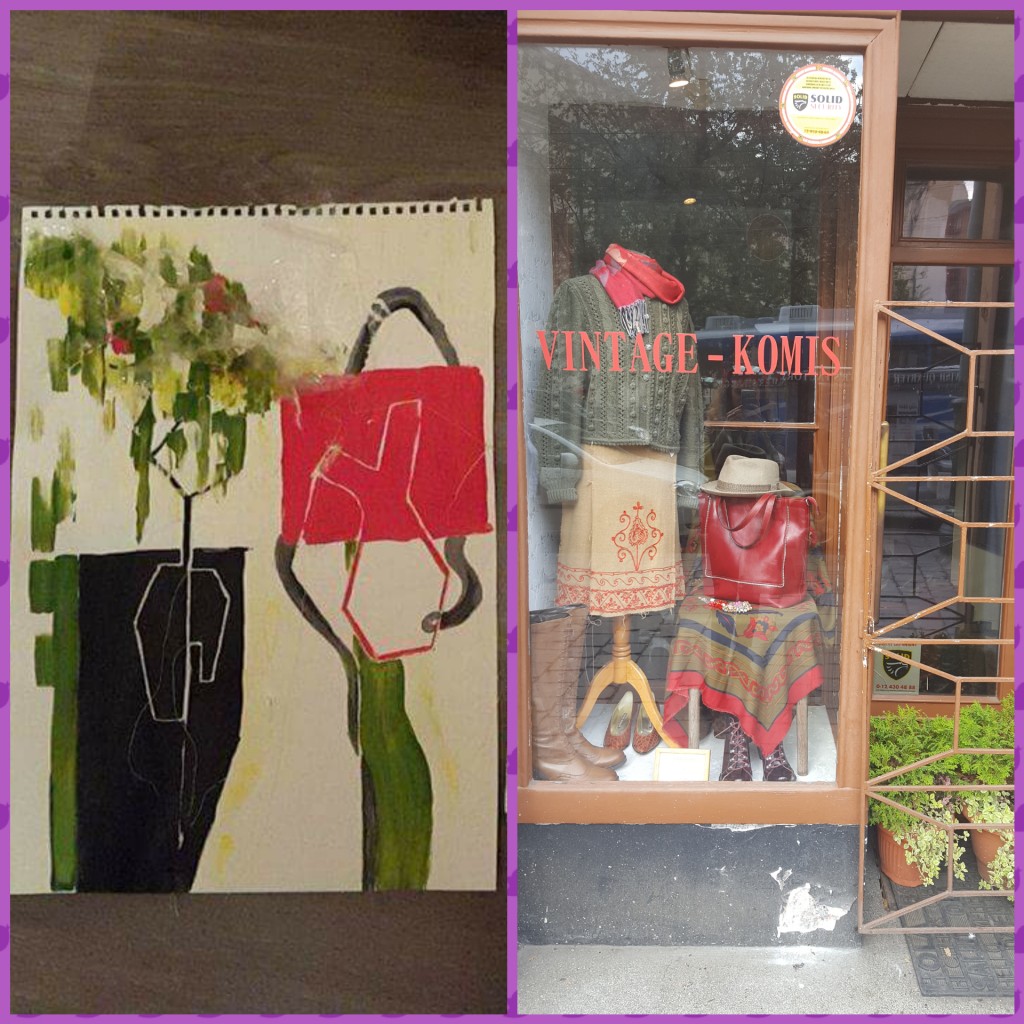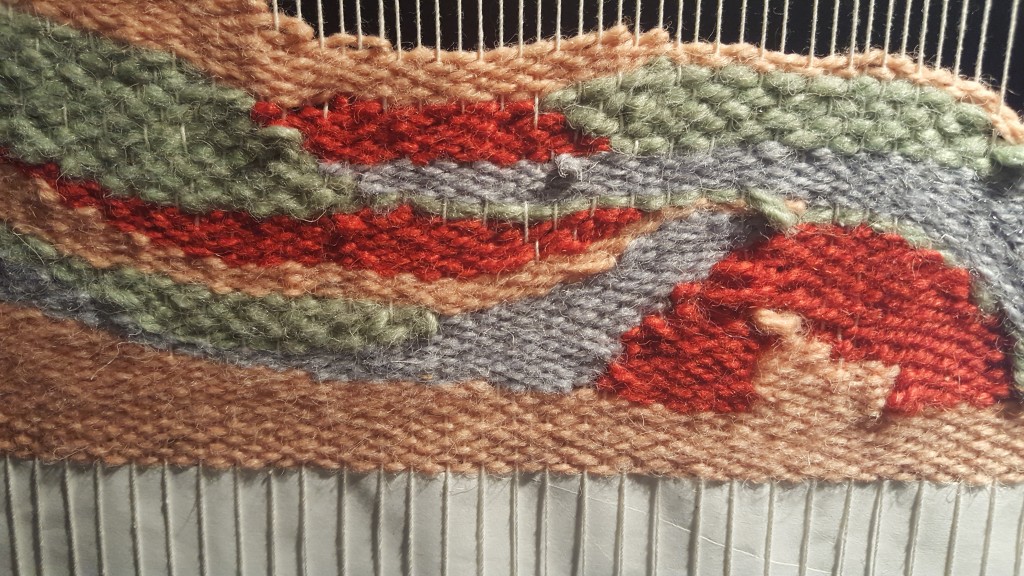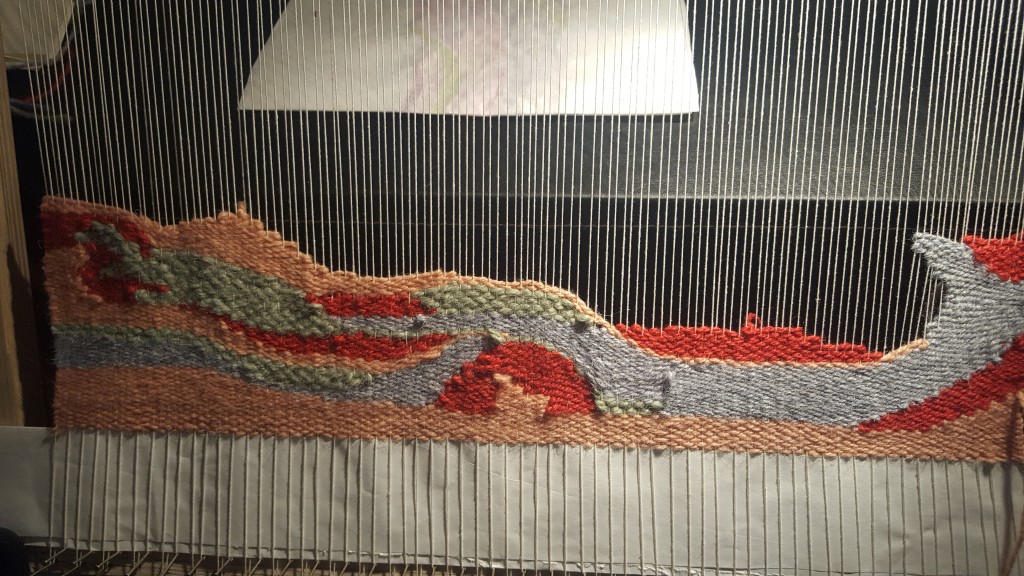Interview with KSA about different means of expressing oneself
Share the post "„It shows that a medium is not so important, it’s the message that is important” – students of KSA talk about different means of expressing oneself"
About craft, art, inspiration and positive energy – just before opening of their exhibition we talk with 1st year students of Fashion College and Photography: Michelle Bińczyk from Colombia, Anna Klychikhnina from Russia, Barbara Stopyra from Poland and Rosa Stefansdottir from Iceland.
Interview by Małgorzata Sokołowska
The subject of the project was Emotion through creativity – bringing emotional content to our work. Transforming simple objects into objects of emotion and desire – what is your understanding of this theme?
Michelle Bińczyk (MB): I suppose, for me at least, it is finding capability of seeing beauty in everything that’s around you. So training your mind to be very flexible and unconventional, which I think is very important as an artist, to have this kind of versatility when it comes to art in general, as a whole. So even this exercise itself, was quite eye-opening and it allowed us to be able to look at such simple objects through different perspective and a different lense, so to speak. And at the same time teaching us how to swap out different lenses, whatever that may be and kind of adapt to different changes and allow us to grow and be a better artist
- Michelle Bińczyk
- Michelle Bińczyk
- Michelle Bińczyk
- Michelle Bińczyk
- Michelle Bińczyk
- Michelle Bińczyk
- Michelle Bińczyk
And when Ms Larmuth first introduced you to this project what did you think it will be about?
Anna Klychikhnina (AK): From the very beginning, maybe it is my psychological background speaking but I grasped this idea about somehow catching something, some emotions deep inside your soul and pulling them out to the surface, using some objects from the outer world. Our first task, our very first task where it all begun was to go outside and collect some trash from the street. And Ms Larmuth insisted that we pick not only the first thing you see but something that would give us some solitary emotions. And I thought „Yes, this is something that brings something personal to it and I love it.” Not just a task to get some grades, but something which somehow makes to listen to ourselves.
- Anna Klychiknina 1
- Anna Klychikhnina 3
- Anna Klychikhnina
What is a connection between emotions and the objects? And actually, creating new objects and new visions from the old ones? Because you collected some objects and they were kind of reborned in a new form. So do you think that those emotions that you had to find in yourself, that this was the force behind it?
Barbara Stopyra (BS): I think that some of things were just trash but there were some that caught our attention, that there was purpose why we brought those objects. So I think that emotional connection between the object and our perception was made. I think that this project was also about training our perception and finding beauty in what is not really considered beauty in general.
- Barbara Stopyra
- Design by Barbara Stopyra
Can you describe your projects? From the starting objects to the result of your work?
BS: So first we went to collect the objects from the street and then it was about making some sort of installation using this objects we collected, so we arranged different compositions, in a different forms and that also encoiraged us to see different shapes, different structures. And actually there were some tips and tricks about how we should work on our projects but I think that each of us found his own way and each of us focused on different things and found beauty and force in different things, but also media, because we were using different medias.
AK: On our first meeting Ms Larmuth told us that our final project should really speak some emotion which we will choose and which we will persue in our works and in this project. So i thought: „Ok, so I will try really hard to stick to this emotion” but now I see that even if I don’t pay so much attention to it, if I do some experiments in this project or whatever, everything still ends up looking as if something that was made on purpose was this precise emotion. I turned out to be happening quite naturally.
And what was your starting object that inspired you at the beginning?
AK: Those things that I collected were: piece of old pipe, really rusty one, old holder for credit cards, this black leathery book. There was also a bottle of some maybe alcoholic drink, maybe not. And a piece of a playing card, a king of hearts. I don’t know why, maybe some unhappy love story or something but it was king of hearts torn in half. This was my favourite find, I think. I combined it in sort of installation and… every single drawing I made was inspired by this.
MB: My approach to this was mainly instinct. At first I didn’t want to have some kind of complete plan because you know… As the saying goes, „make plans and God will laugh” so I wanted to see what my consciousness will naturally be drawn to. Definetely discovered many things that I found myself attracted to quite naturally. So the things that I ended up choosing were also to be the things that are very organic, that have kind of infinite feel in the lines and in the curves. For example I chose twigs as one of the pieces that gradually were torn to shreds and are probably gone by now. A brick, which was something solid compared to. And things that I found were kind of collided together. Collided but also quite harmonious. And I discovered how I can corelate, that things can be so delicate and so tough but still work together marvelously. This ended up as my theme for everything else.
The process consisted of many phases, because you collected objects and inspired by them you were making installations and then patterns and then photos and then the final result came. So you were all using few different techniques to explore and to develop a project. What are your views and ideas that changed throughout the process, because of the different techniques?
BS: We were inspired not to create just beautiful perfect things like it is sometimes with fashion illustration, because everything is fashion related. So we were encouraged to see things in another way, look for different shapes, different textures. Also on some things that we don’t see at first but when we go more deep in seeing and in perceiving, then we can discover beauty in all sort of matter.
MB: Definetely developed our instincts because a lot of times we were approaching different techniques we didn’t even know what we were doing. It all just came together so right and so naturally and just harmonized with everything.
AK: And for me, this process somehow changed the amount of attention I give to material from which something is made. When I first collected the things from the street I didn’t really pay attention to it. That this is iron or this is glass. I was only thinking: ”Oh, this is interesting”. And then all my works consisted of leather and silver, silver and leather, and then something transparent and then leathery again, so I think this was important.
This brings me to questions to a photographer. What role, in your opinion, visual arts like photography, can play in a fashion designing? Because, photography is of course an art itself but do you think that it can bring something to the process of designing also?
Rosa Stefansdottir (RS): Yes, definetely. I think that if you have good photographer, he or she will bring some interesting view for himself or herself, what they see. And if the designer and the photographer work together it can be very interesting. What I found out is that a fashion photography is not just taking a picture of pretty clothing, it’s really capturing something and this is why I came to photography in the first place, because I wanted to be a news photographer, to capture a moment. But the same thing is possible with fashion photography, I think if everything comes together, you can really see your products in a good light.
- Photography by Rosa Stefansdottir student of the one of international faculties in KSA
We were talking about bringing emotions to our work, what is your approach, how this can be done, to bring emotions in fashion photography? So that photo is not only a photo of pretty girl in a nice dress but there is meaning behind it.
RS: I think interaction for one. And one, two and three. I always think about the model, talk. Because I’ve been in the position of the model and not knowing what to do and it shows on the photograph if the model is uncomfortable. If a photoshoot is fun for the both of you, for all the people around, it usually is a better photo.
This project consisted from a lot of craftship and also a lot of creativity. Stereotypically, art and craft are somehow divided, craft brings to mind detailed, precise work and art is viewed as a more of a creative chaos, genius of subconciusness. What are your thoughts about it? Is art and craft two different concepts?
MB: If it would be compared to having a dreamer and a realist, where a craftsman is a realist and artist is a dreamer and somehow working together then can create really wholesome energy, in a yin and yang kind of way. Craftsmanship can also be artistic for sure, regardless of the fact that it has a lot of manual labour, details and precision but at the same time, with a wild mind can make something that can be completely out of the box.
AK: I think it is totally possible for artist and craftman to go in each other territory and share the experience. For example I’ve been in MOCAK recently and there are pieces… I don’t remeber the name exactly but there is a female artist that uses embroidies, this very traditional craft to send some artistic message about free spirit and things like that. But she used very traditional method to show how craft and art can go hand in hand to reach the ultimate goal, so to speak. It shows that a medium is not so important, it’s the message that is important.
RS: This is also a big question in photography, is photography an art. And my background is painting, I started with painting and drawing and then changed my studies into a graphic design and from there went to a photography. Through all of this I was trying to express myself, I’ve always been artistic, but it wasn’t until photography when I felt that I could express myself. I’m still a good painter and I can draw but I choose this art form. And I think craft is the same, I mean, street art or whatever, is used to express by an artist.
I also have another question about a craftwork, because it is very time-consumming and it has consequences. For example, in Japan there is a special kind of artist, a netsuke maker. Netsuke are a tiny sculptures, only a few centimeters long. But making them takes months. The reason is, a sculptor won’t work on it everyday, but only when he is in a right state of mind, relaxed, maybe after dinner and smoking a pipe. Because he wants to fill netsuke with special kind of emotion and energy. Do you think that certain attitude results in your work?
RS: Definetely. For sure. For example, if you approach a photoshoot with a a bad attitude, then you won’t like your photos, you won’t work hard and the final product will be… Not good.
MB: I can definetely vibe with that as well, generally Japanese philosophy is always fascinating to me and always have been. If you feed the universe with positive vibration then only the same thing can be given back in return. It’s also the natural order of things. I mean, call it karma or whatever you will, but… If you put some kind of energy in whatever you’re doing, whether it will be anger or happiness or desire or whatever, that is also what a person that is looking at this piece of art is going to feel in return. That’s why I feel like photography is really great medium to experiment with such things because at the same time humans are very visual creatures, we are very much impacted with what we see.
AK: I totally agree with this because mood always results in certain kind of work. I learned from experience that if you approach something without inspiration, without some good vibes, maybe you will reach your goal, but you won’t learn anything from it and you will not enjoy the results. You will not be inspired to incorporate those results into another projects, you will just hate it generally, it won’t take you anywhere. So if I have a choice to approach a project in a better mood, I’ll always take it.
BS: I also agree, because act of creation is also expressing yoruself. I think it is impossible to hide your emotions when creating something.
I wanted to ask about photographing some piece of craft, let’s say embroided sleeve. How you can present the complexity of it and the story behind it?
RS: I definetely take my time to study the product or clothing or whatever it is before starting the photographing. But when in a studio and I’m about to take a photograph, I would definetely try all the angles and the lighting, maybe dramatic lighting or soft when it is piece of jewellery, if it’s gold jewellery i would have darker… It depends from everything. When you say „a sleeve” the first thing that comes to my mind is to take a picture from the bottom and up. And also from the top to down, not just… I think that one of my best lessons here was when a teacher told me „don’t go from here, go from there” <not from the eye level but from the chest level>. That really changes your view. And this is one of the things about fashion photography, because you can take many pictures and none will look the same as the other.
And we were talking about process, what would be your process, photographic process? Your inspiration, preparation…
RS: The reason why I came to Poland is… My background is landscape, it’s the only thing that you can photograph in Iceland, so… I want to work with people, so they are my inspiration. I love just go downtown in Kraków, taking pictures of children, old people, homeless people, drunk people, whatever it is. People are almost always my inspiration. And I think objects are something that represents a person.
Can you tell me more about the exhibition that you are preparing?
AK: I think that the general idea is that a marvelous observations can come from many different objects, which would be normally ignored. It should inspire people and also it will be our first exhibition and people from our course are proud and anxious about it. I am sure that many people will be interested in it.
MB: Actually the entire thing was almost like an accident, because we received information from each course what we will be doing and how it will be done. And in general it was supposed to be something like an exhibition but more like to showcase our final work and have a grade from that. But one day Ms Margaret decided that we should do an entire production, so at first it was very stressful, as a vast majority of people lack the general background in art, so the way of approaching this was completely new to them. So „Oh, there will be an exhibition so hol sh**! What to do?”. So at the beginning it was quite stressful but with time it would seem as less of an accident and more as something that we embraced. It’s a great oppportunity that we can show our work.
So the exhibition will be a story of making, kind of „making of”, showing all the different faces of the process. Did you learn thanks to this exhibition, the means of showing to others the evolution of your idea and also, even technically, how to exhibit your work?
AK: Main portion of work is still ahead of us. I know that people are working on a video, some organizational stuff. And about the ways to exhibit, I think that everyone have a different mean of portraying. That’s what makes it so interesting. So I think it will be very positive outcome, very useful experience
BS: I think it also shows that every little thing is really complex. For example, when it comes to art, you have to create it somehow, but you have to show it somehow, to exhibit somehow. Everything is really complex, really multidimensional. When you are making a film or a collection, there are a lot of people involved, you have to think a lot about organizational stuff which might be really difficult but it just have to be done. Somehow it’s even harder than actual creation. You have to think of ‘after’.
A peek into artist’s mind – Marcela Krochtova:
At the beginning of my creative work, idea began to form gradually and slowly. The great inspiration for creation was walking through streets and noticing people and life around me. Main inspiration found me in a small café where melody of the song Il Mondo hit my heart and creative process got green. This moment I knew what I had to do. My grandmother died 3years ago and ,,IL MONDO´´ was her favourite song. Atmosphere of the whole moment sucked me in and created idea about my artwork.
Grandmother was creative person who taught me to notice beautiful things and absorb the atmosphere of interesting moments into my heart. Time spent with her has gone but connection between us is still here. Grandmother surrounded me with Il Mondo whose air is full of creative impulse. These feelings, thoughts and great love surrounded me and I wanted to transfer them into my work.
My embroidery shows connection between me on the earth and her in the sky, and long stitches show a strong infinity connection full of love. The colourful embroidery points out symbolism of the sun (day) and moon (night), which are inseparable pair.
For my final product I chose a weaving belt because it divides and connects human body on the top and bottom the same how I am dividing and connecting with my grandmother. Hand weaving is a little difficult, old, slow technique which is very interesting but I wanted to try it and prepare something not typical and original made of love.
- Marcela Krochtova
- Marcela Krochtova
- Marcela Krochtova
- Marcela Krochtova
- Marcela Krochtova

